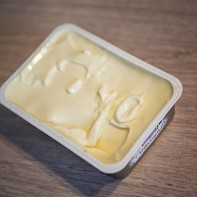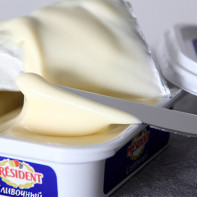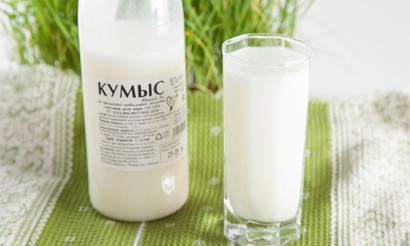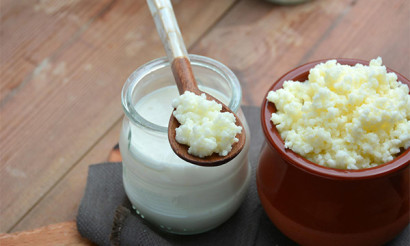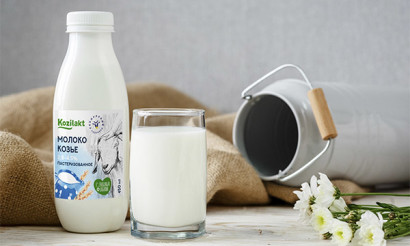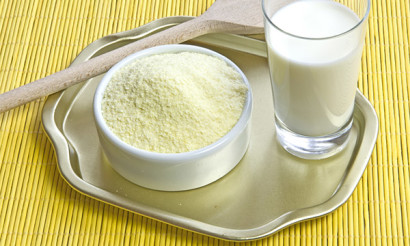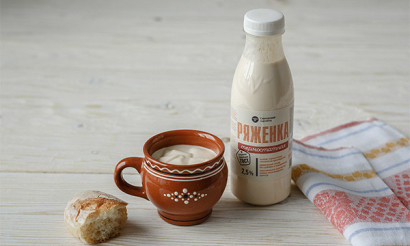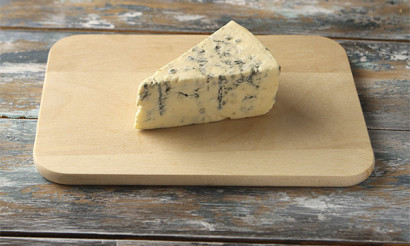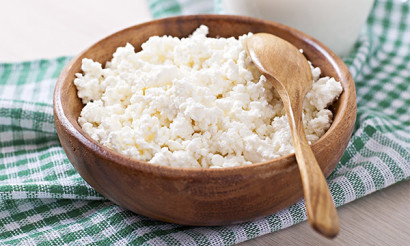Cream cheese: benefits and harms to the body
The delicate creamy taste of cream cheese is known and loved by adults and children. This is one of the most popular products containing milk. Cream cheese with savory additives from mushrooms, herbs, spices attracts gourmets. Sweet cheeses with vanilla and cocoa are the perfect complement to morning tea or coffee. This tasty and healthy product is used for cooking first courses, salads, desserts, pastries.
- What cream cheese is made of
- Views
- What is the difference between processed cheese and ordinary
- Composition and calorie content
- What is the use of processed cheese
- General benefit
- For women
- For men
- During pregnancy
- When breastfeeding
- For children
- When losing weight
- Cooking Application
- Harm and contraindications
- How to choose and store processed cheese
- Is it possible to store in the freezer
- How to make cream cheese at home
- What can be cooked from cream cheese: recipes
- Cheese Soup with Broccoli
- Tenderness Salad
- Hot grilled sandwiches
- How to melt cream cheese
- Can cats be given processed cheese
- Interesting Facts About Cream Cheese
What cream cheese is made of
The main component for the manufacture of processed cheese are hard varieties of the same product. For processing go unripe or incorrectly formed in the manufacturing process heads.

The idea of processing hard cheeses, which for some reason cannot go on sale, came up with the connoisseurs of cheese making and connoisseurs of this product - the Swiss.
Walter Gerber and Fritz Stettler remelted a batch of emmental cheese, which had an unpresentable appearance for sale. To add a special flavor, sodium citrate was added to the base. This event occurred in 1911. Many people liked the new product, and after a few years, processed cheese appeared on sale.
A lot of time has passed since then, and other components began to be used in the manufacturing process. There is processed cheese made on the basis of cottage cheese, milk powder, cream concentrate, butter with the addition of all kinds of seasonings and flavorings.
Views
The production technology is the same, but this does not give rise to the same products.
Cream cheese has a different percentage of fat content. It ranges from 25-60%. The product differs in consistency: cheeses are dense, viscous, pasty. They can be sterilized or pasteurized, have a different shape and packaging, differ in taste.
The main types include:
- Lomteva is quite dense and elastic. It is produced with a fat content of up to 70%. It is well cut, rubbed, so it is great for making salads, soups. It has a number of flavors. Usually familiar rectangular shape, packed in foil.
- Pasteurous cheeses are similar in texture to thick sour cream. A large percentage of moisture and fat makes them plastic. They are perfectly spread on bread, crackers, bread. Such a product is available in plastic jars or boxes. It has a variety of tastes and aromas.
- Sausage processed cheese has the most dense texture of all types. It has the shape of sausage sticks - hence the name. It contains a small percentage of fats, so it is considered the lowest-calorie among all processed cheeses. A distinctive feature of the product is the additional processing - smoking. Cumin, bitter pepper gives a piquant creamy taste.
- Sweet cream cheese can be pasty or chunky. As additional ingredients, cocoa, vanilla, chocolate chips, coffee are used.
In addition to processed milk cheeses, products based on vegetable fats are also produced. Most often it is soy. They are suitable for people with lactose intolerance.
What is the difference between processed cheese and ordinary
Milk, sourdough and enzymes to impart density and the desired consistency to the finished product are the main components for the manufacture of conventional cheese varieties.Most of the additional ingredients are of natural origin, although manufacturers do not disdain preservatives, flavor enhancers. The cheese making process is quite long, going through several stages. The longest is exposure. Depending on the type of hard cheese, it can take from several months to a year.
The basis of processed cheese is hard. At a temperature of 75–95 ° C, ordinary cheese is melted, turning into a homogeneous mass. Then add other components: milk powder, butter, cream. To achieve the desired consistency, manufacturers use thickeners, often of artificial origin.
Processed types of cheese contain more flavor enhancers, preservatives and flavorings than solid ones.
Cooking processed cheese does not take much time. Therefore, its cost is much less than that of ordinary cheese.
In addition to the main ingredients and the manufacturing process, these types of cheeses differ in the content of useful components. Solids contain more calcium, while melted ones contain less cholesterol, and it is absorbed faster by the body.
Each of these cheese varieties has its own taste.
Composition and calorie content
To obtain a quality product, manufacturers use not only hard (rennet) cheeses. In the manufacturing process, it is added:
- Natural cottage cheese, butter, milk powder and cream.
- Emulsifiers that improve the uniformity of the raw material mass and texture of the finished product.
- Corn starch - serves to improve the consistency of pasty cheeses. Thanks to this component, slice cheeses are excellent in melting.
- Vegetable fats - replace the more expensive natural fats, which is why processed cheeses have an affordable cost.
- Sodium supplements, sugar - contribute to enhancing the taste of cheese.
- Preservatives and aromatic additives - serve not only for a piquant aroma, but also extend the shelf life of the finished cheese.
The chemical composition of processed cheese is rich in nutrients. It contains vitamins A, D, E; amino acids (leucine, valine), contributing to the full functioning of the internal organs; semi-saturated fatty acids; potassium, phosphorus, sodium and a small percentage of calcium.
Cream cheese is a nutritious and fairly high-calorie product. Depending on the type, the energy value is from 200 to 305 calories per 100 g. This is facilitated by the high fat content - 20-23 g, which is about 30% of the daily norm. The amount of protein is 7–10 g. There are few carbohydrates, only 2–4% of the daily norm is about 3-5 g.
Although this product is high-calorie, it is easily and quickly absorbed by the body.
What is the use of processed cheese

General benefit
- Dairy products have a beneficial effect on the work of all human organs, contribute to the replenishment of vitamins and other necessary elements for health. Cream cheese is no exception. It contains high-quality protein - casein, which is directly involved in the allocation of beneficial amino acids. And they help improve muscle tissue, positively affect the functioning of the human brain.
- It contains vitamin A, which contributes to the normalization of vision. Maintain balance, improve skin, strengthen hair vitamins E, D.
- Cream cheese is especially useful for people who experience frequent stress.
- Although in small quantities, it contains calcium, which has a strengthening effect on the spine, bone tissue, nail plates, hair.
- Cream cheese is quickly absorbed by the body and does not contain cholesterol.
- The presence in the diet of this product will have a positive effect on the digestive system, improve blood circulation.
For women
Micro and macro elements, vitamins, which are part of processed cheese, contribute to the improvement of the female body. Vitamins have a positive effect on the condition of the hair, improve skin color. In addition, the use of this product reduces the production of cortisol (stress hormone).
For men
A sufficiently high protein content makes processed cheese a useful product for men.After all, this element contributes to the production of hormones, on which the health of a strong half of humanity depends.
During pregnancy
Homemade processed cheeses made from natural dairy products contain a lot of calcium. This element is necessary for the full formation of bone and muscle tissue of the fetus. Vitamins and amino acids replenish the supply of useful substances in the body of a future mother.
Processed cheeses on sale will not benefit the body of a pregnant woman. On the contrary, all kinds of chemical additives can provoke allergies, malfunctioning of internal organs.
When breastfeeding
Nursing women should be careful to include milk-containing foods in their diet. Although they are rich in calcium, potassium, phosphorus and vitamins, they can cause allergies in infants.
During this period, it is better to refrain from eating foods containing vegetable fats, dyes, preservatives, emulsifiers, including processed cheese. In addition, the product contains a large proportion of sodium. This can affect the digestive system of the baby.
When breastfeeding, it is recommended to try introducing processed cheese into the diet, cooked at home.
For children
Processed cheeses contain the minimum amount of elements necessary for the full development of the child. Sweet species can be used as a treat, but not often. Their composition can provoke an allergic reaction. Children up to 3-4 years old are not recommended to use processed cheeses.
When losing weight
All types of processed cheeses are considered high-calorie. But this indicator does not contribute to a complete rejection of the product. All its nutritional and positive properties can be used for the good of the body.
A small slice of cream cheese on a bran bun or a thinly spread pasty layer on whole grain bread is useful in the morning. Such a sandwich will satisfy hunger, saturate the body with vitamins, and give extra vigor for the whole day.
Cooking Application
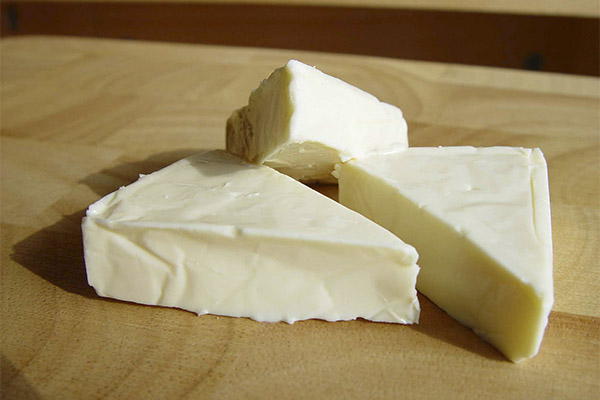
- Processed cheeses are used as an independent product or as one of the ingredients in various dishes.
- Pasty species are used to prepare various snacks. It’s convenient to smear pita bread and make it roll. Cheese goes well with meat, herbs, mushrooms, eggs, shrimp.
- This product is also indispensable for a quick breakfast. A toast spread with cheese or a hot sandwich will serve as a tasty and nutritious addition to a morning cup of tea or coffee.
- Cream cheese (usually slice cheese) is also used for making soups. If you use a product with additives from Provencal herbs, herbs, mushrooms, the first dish acquires a refined aroma. Moreover, such a soup is very satisfying.
- In vegetable, meat or salads with seafood, creamy or smoked cheese is one of the housewives' favorite ingredients.
- Add this product to the minced meat. It not only gives ordinary cutlets a new taste, but also makes them more juicy and tender.
- A crust on a potato casserole, processed cheese lasagna is softer and tastier than hard cheese.
- Sweet processed cheeses are used as dessert. He is very fond of children, and for adults it is a great snack of light white wine.
- Some housewives use sweet cheeses as a filling for pancakes.
It is easy enough to find the use of cream cheese in cooking, it depends on the imagination of the cook.
Harm and contraindications
Cream cheese, cooked at home, can not harm the body, except in the case of individual intolerance to lactose or other constituent component. But a product that is commercially available can adversely affect health.
- Processed cheeses contain a large percentage of sodium. This component does not affect the work of the heart in the best way, it can cause an increase in pressure.
- In people with a tendency to allergies, phosphate aromatic additives and all kinds of flavor enhancers can contribute to the appearance of a rash. In extreme cases, they even lead to swelling of the throat.
- Chemical additives can impair kidney function, causing fluid retention in the body.
- All chemical additives adversely affect the work of the stomach, especially for people with high acidity.
Many manufacturers use vegetable fats instead of natural dairy ingredients. For example, canola or palm oil in processed cheese turns it into a cheese product. It does not have any useful properties, besides it is of low quality and can provoke an allergic reaction.
Processed cheeses of all kinds are contraindicated:
- with chronic diseases of the stomach and duodenum;
- kidney problems;
- propensity to be overweight and overweight;
- hypertension
- heart failure;
- high cholesterol.
The use of cream cheese in moderate doses, compliance with all the recommendations of doctors is important for people with chronic diseases of the internal organs. Only in this way the product will not cause significant harm.
It is not recommended to include it in the children's diet (up to 4 years). Semi-smoked sausage processed cheese should not be given to children under 7-10 years old.
How to choose and store processed cheese
Useful and valuable ingredients are found only in quality types of processed cheese. Therefore, when buying, you should pay attention to such nuances:
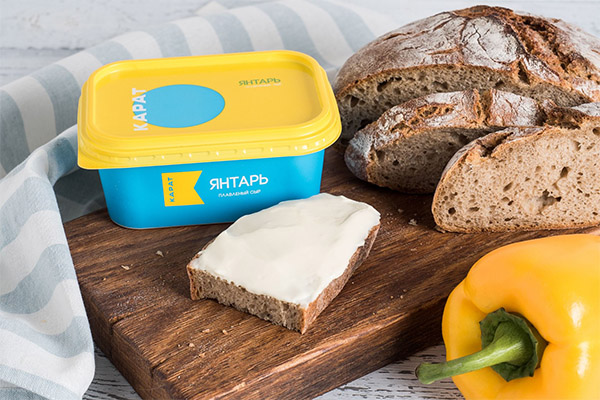
- Title. If the goal is to buy a natural product, then the name should contain the word "cheese", not a processed product or cheese. Typically, manufacturers so-called cheese products made on the basis of vegetable fats.
- Tightness and integrity of the package. A good product cannot be wrinkled, deformed. The presence of such defects indicates improper transportation and storage of processed cheese. If it is pasty cheese in a plastic jar or box, the presence of PP marking is mandatory on it. This abbreviation means the suitability of the material for food storage.
- Shelf life. The maximum shelf life of processed cheese is 180 days.
- The composition indicated on the label. The components should be natural dairy, not plant origin. Additives, emulsifiers, flavorings should be present only in small quantities. Generally, the longer the list of ingredients, the less natural the product.
- Colour. Fresh cheese has a white or pale cream color, and even. Its surface is smooth and slightly shiny. Depending on additional additives, the color changes.
Cream cheese can only be stored in the refrigerator. After opening, the product must be consumed before the time specified by the manufacturer.
Is it possible to store in the freezer
If necessary, chunk or sausage cheese can be placed in the freezer. But after freezing, the product will lose its integrity, so it is not worth serving it in a thawed form to the table. This processed cheese is used to make soups or dishes baked in the oven.
It can be stored in the freezer for no more than a month.
How to make cream cheese at home
Processed cheese, cooked at home, using natural ingredients, will bring much more benefits to the body than a product purchased in a store.
Cottage cheese-based cream cheese recipe
Ingredients:
- 20% cottage cheese - 1 kg.
- Milk 3.2% fat - 1 liter.
- Butter - 70 g.
- Egg - 2 pcs.
- Salt - 1/3 tsp
Stages of preparation:
- Pour milk into the pan. Put on fire and let it boil.
- Pour cottage cheese. Mix. Cook for about 25 minutes.
- Remove pan from heat. Strain the milk-curd mixture through a sieve, thus getting rid of unnecessary liquid. When all the water has drained, send the resulting mass back to the pan.
- Introduce the eggs. Put salt and butter.Stir thoroughly with a wooden spoon.
- Put the pan on the stove, turn on the medium heating mode. Over the next 15–25 minutes, the mass will melt. In the process, you can still reduce the heating plate.
- Cover the colander with gauze folded in 2-3 layers.
- After the allotted time, the mass is thrown back into the prepared colander. All fluid must drain.
- Wrap the cheese mass with gauze.
- Lay on a plate. Place a load on top. It will add density to processed cheese.
- Put the plate in the refrigerator for 20-25 hours.
Homemade cream cheese is ready.
What can be cooked from cream cheese: recipes
Cheese Soup with Broccoli

Ingredients:
- 400 ml of chicken or vegetable broth.
- 1/4 tsp salt.
- 400 ml cream (can be cut in half with milk).
- 1/3 tsp ground pepper.
- 300 g of broccoli inflorescences.
- 1/2 tsp ground paprika.
- 250 g of grated cream cheese.
- 0.5 tsp dry mustard.
- 5 tbsp butter.
- 1/4 Art. flour.
- 1 small onion.
- 2 small cloves of garlic.
- 2 large carrots.
Step-by-step preparation:
- Put 1 tablespoon in a small pan. butter, chopped onion finely. Passer until golden brown. Add finely chopped garlic. Stir frying for 30–40 seconds.
- Put the remaining butter in a saucepan, add flour. Constantly stirring with a wooden fork, cook for 3-4 minutes.
- Introduce the broth into a thin stream. Beat until smooth.
- Add cream in parts, not forgetting to constantly stir, boil for 15–20 minutes at moderate power.
- Pour into thinly sliced carrots in boiling creamy broth, broccoli, fried onions, garlic and the remaining seasonings. Cook for 25 minutes, stirring occasionally.
- Put most of the grated cheese in a pan, mix. Cook for another 2-3 minutes, until the cheese has dissolved.
- Pour the finished dish into plates, garnish with the remaining cheese.
You can store light cheese soup for 3-4 days in the refrigerator.
Tenderness Salad
Ingredients:
- Chicken fillet - 300-400 g.
- Medium onion - 2 pcs.
- Cream cheese - 2 pcs.
- Mushrooms - 700 g.
- Egg - 4 pcs.
- Vegetable oil - 3 tbsp.
- Butter - 50 g.
- Mayonnaise.
- Salt.
Cooking method:
- Boil the eggs. Fry the onion in vegetable oil until dark golden. Peel the mushrooms, put butter in a pan, pour 1 tbsp. vegetable. When the butter has melted, put the chopped mushrooms. Cook for 10-15 minutes.
- Cream cheese grate. Cut the fillet into cubes of medium thickness. In boiled eggs, separate the yolk from the protein and grind them individually.
- Lay out the salad in layers, each of them smeared with mayonnaise: onions, chicken, fried mushrooms, protein, cream cheese.
- Garnish the salad with finely chopped chicken yolks.
Hot grilled sandwiches
Components:
- 1 pack of bread for toast.
- 4 tbsp chopped mixture of parsley and dill.
- 200 g of cream cheese with herbs.
- 2 tbsp finely chopped shallots.
- 400 g processed cheese with bacon flavor.
- 6–8 tbsp mayonnaise.
- 300 g of Dutch cheese.
- 2 tsp mustard.
Cooking:
- In a small bowl, mix all types of cheese, herbs, onions.
- In another container, prepare the mustard-mayonnaise mixture.
- Spread a slice of bread with the prepared mixture. Decompose the cheese mass. Cover with another slice of bread.
- Place sandwiches on a baking sheet lightly greased with vegetable oil.
- Put in the oven. Set the “grill” function and the temperature mode 180 ° C. Fry for 2 minutes on each side until the bread is browned.
These sandwiches can be prepared on the open grill or on the stove.
How to melt cream cheese
The product obtained from the processing of hard cheeses lends itself perfectly to melting even at low temperatures. Usually, for the preparation of soups and dishes in the oven, slice cheese is used.

It is cut into thin layers or ground on a grater.You can melt the product in a boiling broth, in a steam bath, in a pan. Dishes baked in the oven with the addition of cream cheese are pre-covered with foil. This will serve as protection against drying out and the formation of a delicious cheese crust.
For the preparation of hot sandwiches, cream cheese in the form of plates is also suitable. It melts well even with minimal use in the microwave.
Can cats be given processed cheese
Pets are very smart animals. They will never eat foods that could be harmful to their health. Therefore, if a cat loves processed cheese, it can be included in the diet. But you should not give your pet more than one slice per day.
The exception is smoked sausage species. In no case can they feed cats, as these cheeses contain carcinogens that are dangerous to the animal. They have a negative effect on the functioning of the kidneys and liver.
Processed cheeses based on vegetable fats do not contain any nutrients. Most often, they have a large number of flavorings, food colors, stabilizers, which can cause digestive problems, in some cases even allergic reactions.
Interesting Facts About Cream Cheese
- The first batch of triangular cream cheese was released by James Kraft in 1950.
- The first batch of processed cheese in the Soviet Union was produced at the Moscow factory in 1934.
- The cheese "Druzhba", "Yantar", "Omichka", well-known in the post-Soviet territory, appeared on the shelves in 1960. Until now, these types of processed cheese are very popular.
«Important: all information on the site is provided exclusively in fact-finding purposes. Before applying any recommendations, consult with a profile specialist. Neither the editors nor the authors are liable for any possible harm caused materials. "



